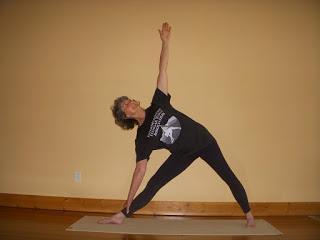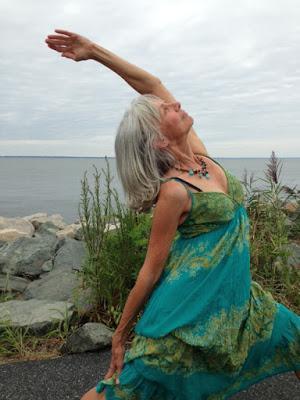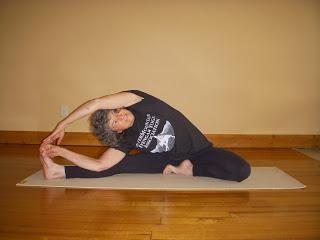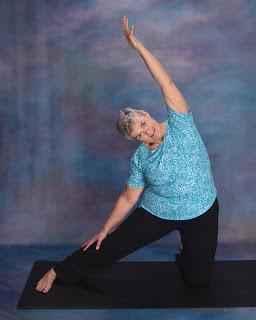Lynda Barrow, Age 63
So far I have addressed forward bending and back bending of the spine and who should avoid those movements. Today, I’d like to address side bending. Technically referred to as “lateral side bending of the spine,” this is the movement is required to take you to the side in full side-bending yoga poses, such as Reverse Warrior 2 pose (Virabradrasana 2 variation), Gate pose (Parighasana), New Moon pose (Parsva Urdhva Hastasana), and Revolved Head-to-Knee pose (Parivritta Janu Sirsana).Judith Sims Barlow, Age 72
Leta Miller, Age 58
Side bending is required to some extent in poses that require a combination of spinal movements, such as Triangle pose (Utthita Trikonasana), Extended Side Angle pose (Utthita Parsva Konasana), and even Warrior 2 pose (Virabhadrasana 2).
Judith Sims Barlow, Age 72
Normally, a healthy spine has good side-bending ability in the lower spine (the lumbar region), the lower rib cage area (the lower thoracic spine), and the neck (cervical spine).Who should avoid side bending of the spine? Those with:
- Scoliosis. Avoid side bending towards the concave side of your curve (There is some controversy about this, so you may want to check the recommendations of teachers who specialize in scoliosis, such as Elise Browning Miller and Loren Fishman, MD, who have specific recommendations about different ways to address the two sides of your curve side bends.)
- Acute soft tissue strains of any muscles, fascia, ligaments from the below the ear to the top rim of the hips that used for side bending, such as the muscles between your ribs (intercostals), your side neck muscles (scalenes), or your lower back side bending muscles (quadratus lumborum). If there is a strain in the sides of your neck, avoid local side bending of your neck, at least while you are healing, but side bending your chest and waist might be okay.
- Arthritis anywhere in your spine, including your neck, mid-spine, or lower spine, that worsens with side bending (this can include facet arthritis and bone spurs or osteophytes of the spinal bones).
- Bulging discs in the spine that becomes more painful with side bending or lead to numbness or weakness in your arms or legs on one side.
- Chronic back pain that worsens with side bending.
- Vertigo that worsens with side bending, especially in your neck.




